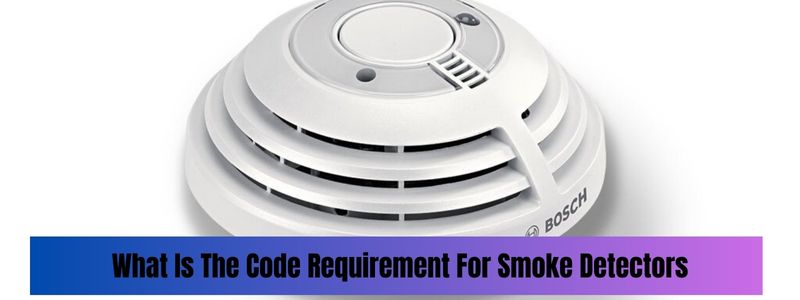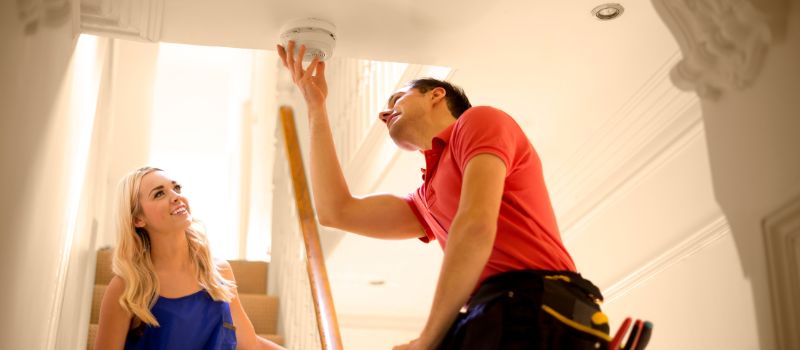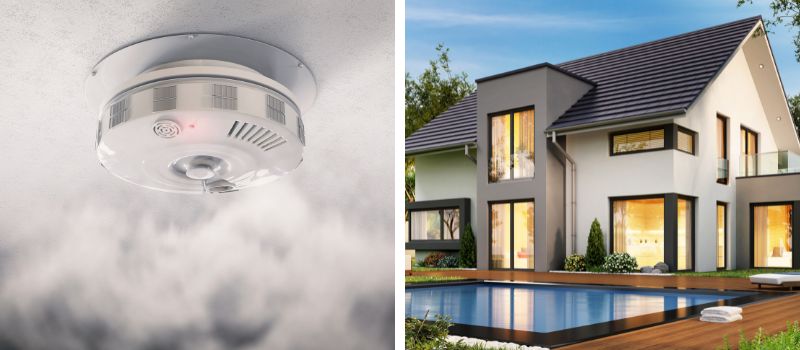In the event of a fire, smoke detectors are essential safety equipment that can save lives. False alarms, however, can be frustrating and lead to unnecessary stress.
Therefore, it’s essential to pick a smoke detector that is less likely to set off false alarms. To assist you in selecting the best smoke detector for your house, we’ll cover the many types of smoke detectors and their features
What Is The Best Smoke Detector To Avoid False Alarms?
According to Consumer Reports, the best smoke detectors to avoid false alarms are dual sensor alarms that use both photoelectric and ionization technologies. The First Alert 3120B and the Kidde P12010 are recommended as top choices for maximum protection. Using a combination of these two types of alarms throughout your home can provide the best possible safety.
Features to Consider
Sensitivity
A smoke detector’s sensitivity refers to its capacity to identify smoke vapours in the atmosphere. Highly sensitive smoke detectors are better at spotting fires because they can pick up smoke particles in lower quantities.
Inter-connectivity
Smoke detectors’ compatibility is its capacity for inter-device communication. When one smoke detector is triggered, interconnected smoke detectors can activate all the alarms in the home, allowing for quicker and more accurate fire detection.
Energy Source
Batteries or electricity can be used to power smoke detectors. While electric smoke detectors must be professionally installed and are hooked directly into the home’s electrical system, battery-powered smoke detectors are portable and simple to install.
Features that Reduce False Alarms
A hush button that temporarily turns off the alarm and a low-battery warning that notifies you when the battery needs to be changed are two features that some smoke detectors have that can help prevent false alarms.
Most Effective Smoke Detectors Avoid False Alarms
In order to prevent false alerts, we looked into and compared some of the top smoke detectors based on the characteristics and types mentioned above:
Nest Protect Smoke and Carbon Monoxide Detector
Ionization and photoelectric technologies are used by the Nest Protect Smoke and Carbon Monoxide Detector to identify both fast-burning and slow-burning fires. Apart from that, it has a Split-Spectrum Sensor that can distinguish between carbon monoxide and smoke.
A smartphone app can be used to operate and connect to the Nest Protect. A low battery warning feature and a quiet button are also included. Both a backup battery and energy are used to power the Nest Protect.
First Alert Dual-Sensor Smoke and Fire Alarm
Ionization and photoelectric technologies are combined in the First Alert Dual-Sensor Smoke and Fire Alarm to detect both quickly burning and slowly burning flames.
It can be powered by electricity or batteries and is connectable. It can be powered by electricity or batteries and is connectable. A low battery warning feature and a quiet button are also included.
Kidde i12040 Smoke Alarm
Ionization technology is used by the Kidde i12040 Smoke Alarm to identify quickly burning flames. It can be powered by electricity or batteries and is connectable. A low battery warning feature and a quiet button are also included.
Kidde PI2010 Smoke and Carbon Monoxide Alarm
The Kidde PI2010 Smoke and Carbon Monoxide Alarm is a dual-sensor device that can detect both fast-burning and slow-burning fires using ionisation and photoelectric technologies. It involves
FAQ
Do advanced smoke detectors reduce false alarms?
Yes, advanced sensors and algorithms are used by smart smoke detectors to distinguish between actual fires and non-dangerous sources of smoke. They are less prone to experience erroneous alerts brought on by steam or cooking odours.
Can smoke detectors be checked to see whether they’re functioning properly?
To make sure they are operating properly, smoke detectors should be examined regularly. You can test the detector by pressing the test button on it or by blowing smoke into it with a candle or an incense stick.

Edward’s expertise in smoke detectors is particularly noteworthy. He has conducted extensive research on the latest advancements in smoke detector technology and has worked closely with manufacturers to develop cutting-edge products that can detect fires more accurately and quickly.




